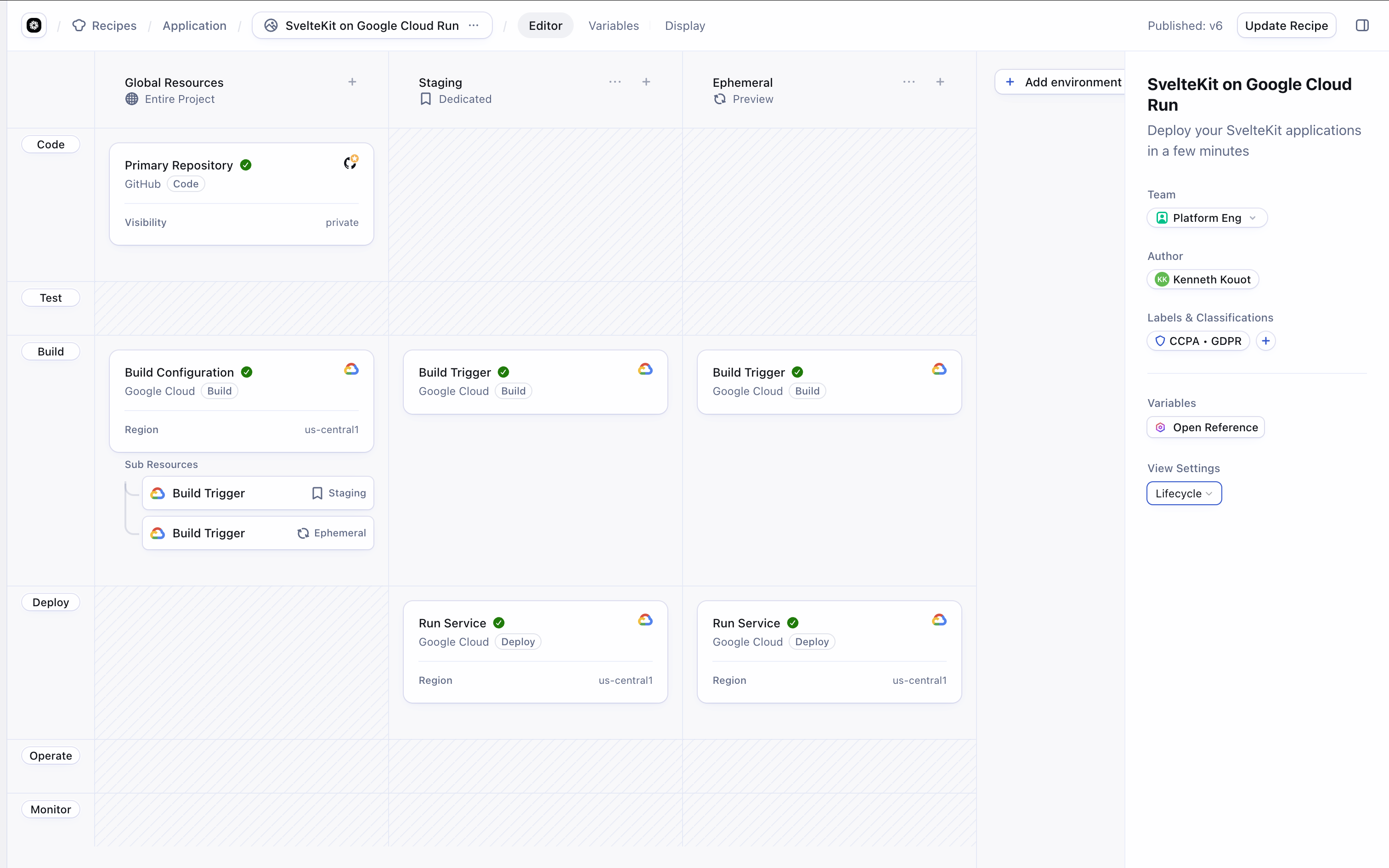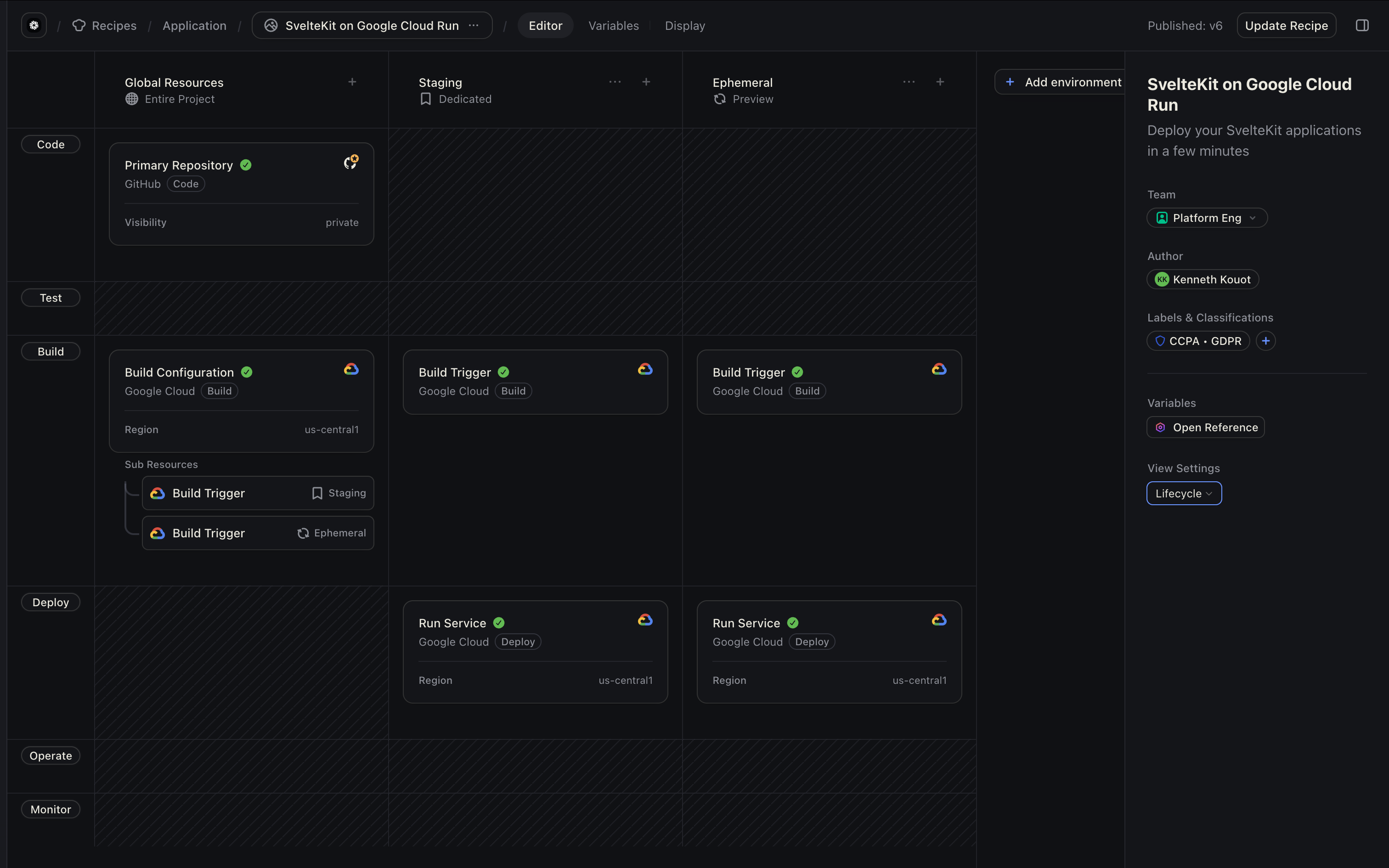About Application Recipes
Application recipes are used to define how you want entire applications to be deployed. In today’s software environment, applications are networks of code, artifacts, infrastructure, services, and secrets that need to be deployed together. Tempest recipes allow you to easily define and deploy these applications. Application recipes are configured in your Tempest web console and the resources you can configure are based on the the your Tempest first-party apps and your own custom Private Apps.

Application recipe configuration using the lifecycle display
Features
Application recipes differ from workflow recipes in a few key ways. Application recipes:- Are tightly integrated with your Git provider
- Git-based deployments
- Git commit and user information display on your project page
- Support the creation of two types of environments: Dedicated and Preview
- Support adding environment variables, secrets, certificates, and private keys
Git Provider Integration
Integration with your Git provider is how Tempest is able to build and deploy your application code.Tempest currently only supports GitHub as an application recipe Git provider, but we’re already working on adding GitLab and Microsoft Azure Repos support. If you need these providers, or another Git provider, please contact us and we’d be happy to help you out.
- For dedicated environments, you can set a target branch. These branches will deploy when a new commit is pushed to the branch.
- For preview environments, you can set configure deployments to trigger based on new branches and pull requests.

